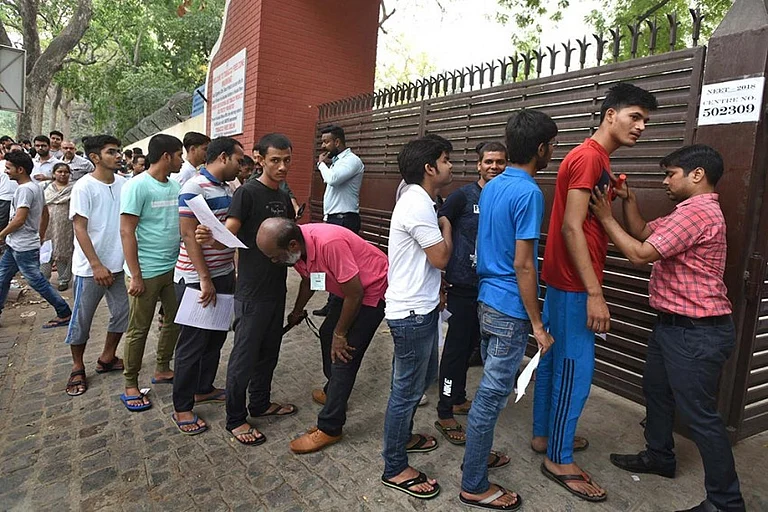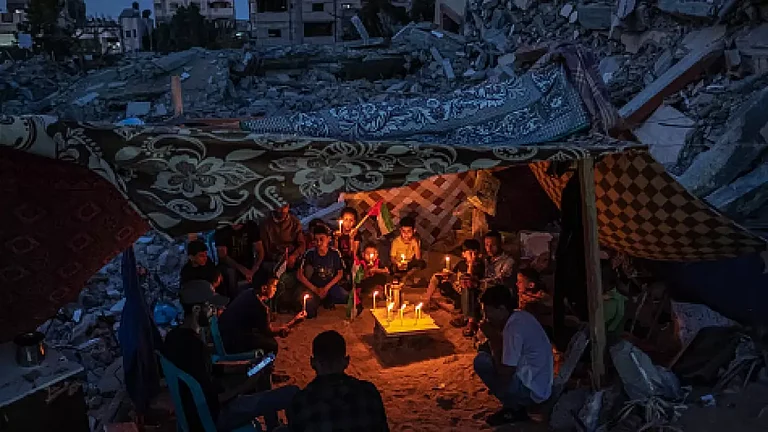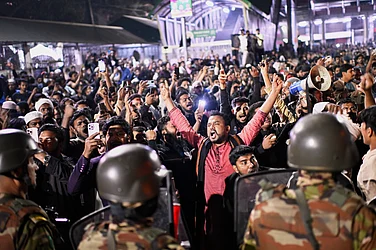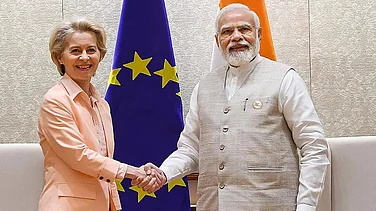Yara, a 22-year-old Syrian woman, entered Gaza on November 8, 2018, with excitement, anticipation, hope—and her wedding dress. She was about to get married to her sweetheart, Fadi al-Ghazali, in ten days. In her in-laws’ house—her new home—she hung the dress on the wardrobe’s door. Four days later, as she arranged her clothes in the bedroom, Yara heard screams from the street outside. Someone pounded on the door and asked her to vacate the house because the Israeli army had attacked the Gaza Strip, destroying nine buildings. So she ran, saving herself. But she couldn’t save the dress or her dream to look like a beatific bride because it got buried under the rubble.
Yara bringing that dress to Gaza from a foreign country was itself a ‘luxury’, as wedding dresses have been banned for import in the territory for a very long time. What else is—or was—banned? Let’s go back in time, say the year 2008, and think about a toddler craving chocolate. Not allowed. Banned. Or how about a Palestinian girl needing crayons and stationary to draw a sketch on an A-4 sized paper? A-4 sized paper, banned; stationary, banned; crayons—crayons?—banned.
None of these, except the wedding dresses, are banned anymore. But that doesn’t mean that Israel has lifted the blockade on all harmless goods or that such a list remained consistent over the years—or that it made any sense at any point. Just read the names of banned items over the last 16 years: lentils, pasta, juice, books, candles, cups, jam, shampoo and, yes, even donkeys. (And this is only a partial list.) This has not just been a war for a very long time, embroiling two nation states, but also a military heavyweight snatching the simple wants of hapless foreign civilians. Who bans pasta? Israel lifted that restriction in 2009 only when Senator John Kerry, on a visit to Gaza, learnt about the ban and questioned the Defence Minister, Ehud Barak, about the baffling rationale.
The story of this blockade has an old history. In December 2005, Israel first threatened to impose an “economic siege” on the Gaza Strip if the Palestinian president, Mahmoud Abbas, refused to disarm the militant groups. It tightened the import restrictions in 2007 when the military organisation Hamas, defeating the nationalist party Fatah, took complete control of Gaza. Declaring it “hostile territory”, Israeli authorities stated that their bans intended to pressure Hamas to stop its attacks. But then the rockets stopped; the bans did not. In fact, they only intensified—and worse, there was no official list. Imagine not knowing the fine-print of your deprivation. Imagine guessing the extent of your oppression.
So, in January 2010, an Israeli human rights group formed to support the Palestinians’ freedom of movement, Gisha, sued the Israeli authorities. “I don’t understand why cinnamon is permitted, but coriander is forbidden,” its director, Sari Bashi, told the BBC. “Is there something more dangerous about coriander? Is coriander more critical to Gaza’s economy than cinnamon?” After several months of silence, the Israeli government submitted a written response to the court, confirming four documents determining the blockade’s mechanics: how it processed requests for imports, how it monitored the shortages in Gaza, its approved list of imports, and a document called ‘Food Consumption in the Gaza Strip-Red Lines’. Even though these disclosures promised a lot, they delivered little. Because the Israeli Ministry of Defence said that it’d reveal the documents’ contents to the judge in a private session.
And what did they reveal? That, from 2007 to 2010, Israel used mathematical formulas to determine the minimum amount of goods permitted into Gaza. Such baffling calisthenics materialised via the estimate of the inventory of basic goods and products, their daily per capita consumption, and Gaza’s population. But in June 2010, the children of Gaza, for the first time in several years, could finally eat chocolates.
Amid intense international pressure, Israel had lifted the restriction on other items, too, such as soda, juice, jam, spices, cookies, candy, shaving cream, and potato chips. But what about the cement and steel needed to build wrecked homes? Still banned. “A modest expansion of the restrictive list of goods allowed into Gaza falls well short of what is needed,” said Maxwel Gaylard, United Nation’s veteran humanitarian official in Palestine. “We need a fundamental change and an opening of crossings for commercial goods.” Next month, in July 2010, Israel published a list of banned items—and lifted the restriction on most consumer goods—entering Gaza. It did state, though, that it would continue to ban items for “dual use” (say, a seemingly innocuous substance that could be used to make explosives).
But since this is Gaza, this story didn’t follow a rational, or any, trajectory. The wars continued to rage; civilians continued to die; and the oppressive bans resurfaced again and again. After the 2014 war, for instance, Israel permitted construction materials to enter Gaza. But only for the private sector. As if its Ministry of Defence had sent the following metaphorical message: that we will leave you broken and helpless and diseased and not even allow you medicines—there’s a super fancy hospital, though, right across the road that you can admire from your rubble. Israel had, in fact, expanded its “dual use” list, adding wooden planks beyond a certain dimension, almost halting the already ravaged furniture industry. It also added Uninterrupted Power Supply (UPS) to it, knowing fully well that power outages often marred the Strip.
It’s dehumanising to hide behind numbers to contextualise the price of humanitarian loss. What stats can, after all, encapsulate the pang of a child forbidden to draw? But in the case of Gaza blockades, Maths at least helps us absorb the enormities of collective loss and possibility, if not their individual emotional pull.
“Between 2007 and 2017, the poverty rate in Gaza increased from 40% to 56%,” according to an August 2020 United Nations report, “and the poverty rate increased from 14% to 20%.” The annual minimum cost of removing poverty, it added, “quadrupled from $209 million to $838 million.” And had the pre-2007 trends continued—that is, before the blockade—Gaza’s poverty rate would have been “15% in 2017 instead of 56%”. But due to the continued bans killing industries and professions and livelihoods, “Gaza witnessed one of the worst economic performances globally and the world’s highest unemployment rate”.
But where there’s oppression, there’s also fight. So the people of Gaza constructed tunnels—slim suffocating havens often lit by a lone hanging bulb for a long stretch—smuggling essential items that Israel had banned (including food, medicine, fuel and of course, pasta). Tunnels became so vital that they even got a name: “The Metro”.
It had “more stops than Washington DC’s metro system,” as a Palestinian-American journalist, Eman Mohammed, recalled in her recent Al Jazeera piece, “and, I dare say, safer.” The Metro worked, yes, but only to an extent. Because it couldn’t provide potable water, electricity, or freedom of movement—or, quite simply, freedom.
(This appeared in the print as 'No Country For Coriander')
































